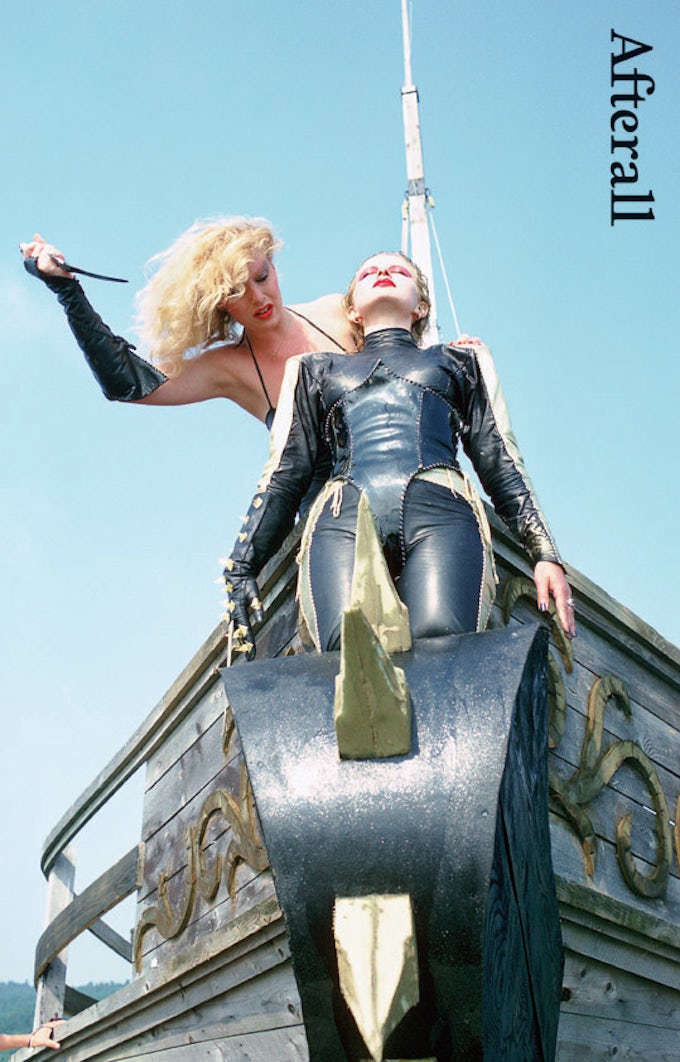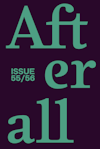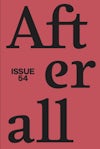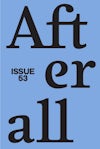
Issue 16
Autumn/Winter 2007
Editors: Charle Esche, Thomas Lawson, Mark Lewis, Dieter Roelstraete, Pablo Lafuente.
Founding editors: Charles Esche, Mark Lewis.
Table of contents
Foreword
Contextual Essays
- I (not love) Information – Anthony Huberman
- Depiction, Object, Event – Jeff Wall
Artists
Yto Barrada
- Sleepers, Magicians, Smugglers: Yto Barrada and the Other Archive of the Strait – Rasha Salti
- The State of the Straits – Nadia Tazi
Gillian Carnegie
- Her Pornographic Imagination – Monika Szewczyk
- Critics vs. Gillian Carnegie – Barry Schwabsky
Ulrike Ottinger
- ‘The true mystery of the world is the visible, not the invisible’: On the Work of Ulrike Ottinger – Hildegund Amanshauser
- Sign in the Void: Ulrike Ottinger’s Johanna d’Arc of Mongolia – Homay King
- Ulrike Ottinger’s Chronicle of Time – Eva Meyer
Christopher Williams
- Christopher Williams: Territory Is Measured at the Borders – Martin Prinzhorn
- Christopher Williams in Conversation – Mark Godfrey
- Christopher Williams in Conversation – Mark Godfrey
Events, Works, Exhibitions
- True Rulers of Their Own Realm: Political Subjectivation in Palle Nielsen’s The Model – A model for a qualitative society – Lars Bang Larsen
- Living with Contradictions: The Resignation of Chris Gilbert
- On Transcript – Claire Barliant
Foreword
Written by Pablo Lafuente & Dieter Roelstraete
The current issue of Afterall is the first to be produced under the auspices of a new partnership. From now on, the journal will incorporate the quarterly visual culture journal AS…
The current issue of Afterall is the first to be produced under the auspices of a new partnership. From now on, the journal will incorporate the quarterly visual culture journal AS, a magazine formerly published by MuHKA, the Museum of Contemporary Art in Antwerp.
Andere Sinema (later abbreviated to AS) was founded in 1978 by a loose grouping of critically minded film amateurs with strong political ideas and an unshakeable belief in the ability of the cinematic experience to transform both the viewer’s life and his or her world. The magazine’s publishing body, an association called De Andere Film that was later to become the Center for Visual Culture, had strong roots in both 1970s film culture – think auteur and apparatus theory – and the political utopianism that propelled so many of that decade’s experiments in adult education. Strongly cinephiliac in its early years, Andere Sinema gradually broadened its critical scope to include reflections on a variety of aspects and effects of the 1980s explosion of visual technologies, in the process becoming a forum for broad discussions of early video and computer art, and for a balanced critique of televisual culture. In the 1990s, the magazine was among the first to seize upon the importance of the burgeoning Internet as a cultural force and realm of artistic and political possibilities, thus closing the circle of what had in the meantime become a veritable academic cottage industry of the first order – ‘visual culture’. Finally, in 2003 the magazine
and its publishing parent the Center for Visual Culture were incorporated into MuHKA – a move which had been prepared by the journal’s gradual distancing from film culture and subsequent turn to the field of contemporary art, the last turning point in the AS‘s long history before its submersion into Afterall.
Naturally, this merger was preceded by long discussions and conversations between the partner institutions and their representatives. It does signal the end of ASas an autonomous publication and concrete space of thought, but simultaneously also secures – a much more important point – the continuation of AS‘s critical legacy, and we are greatly pleased that Afterall provides this ‘shelter’.
Purchase
The publication is available for purchase. If you would like specific articles only, it is also available individually and to be downloaded as PDFs.
Purchase full publication
Buy via University of Chicago Press
Buy via Central Books
Purchase individual articles
Buy via University of Chicago Press



